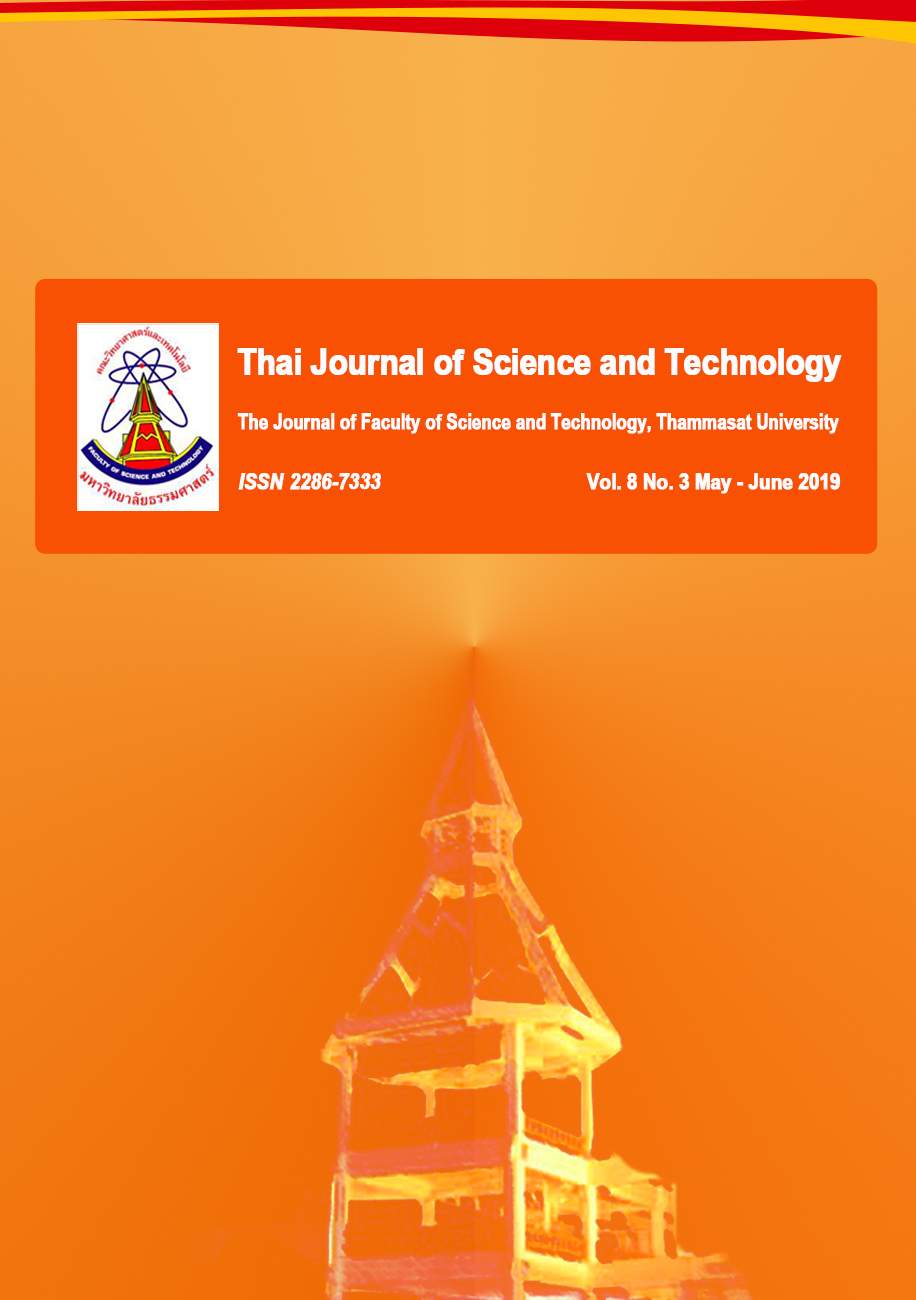การวิเคราะห์วอเตอร์ฟุตพรินต์ในกระบวนการผลิตเบนซีนและพาราไซลีน
Main Article Content
Abstract
Abstract
This research studies the effect of water consumption in a chemical industry, that focuses on Benzene and Paraxylene processes. The water consumption consists of direct and indirect water. Direct water means the water used in production process and indirect water means the water used in producing substrate, electric, steam, nitrogen and water involves in transportation process. This research proposes a water footprint evaluation based on principle, requirement, and guidelines of ISO 14046. It is found that the water scarcity footprints of Benzene and Paraxylene are 0.613 and 1.432 LiterH2Oeq, respectively. The results not only show the effect from water footprint in terms of water scarcity but also are used to provide corrective action which assesses products, processes and organizations using life cycle assessment (LCA). The corrective action in this study can be proceeded by reducing direct and indirect water effect.
Keywords: water consumption; life cycle assessment (LCA); water footprint
Article Details
บทความที่ได้รับการตีพิมพ์เป็นลิขสิทธิ์ของคณะวิทยาศาสตร์และเทคโนโลยี มหาวิทยาลัยธรรมศาสตร์ ข้อความที่ปรากฏในแต่ละเรื่องของวารสารเล่มนี้เป็นเพียงความเห็นส่วนตัวของผู้เขียน ไม่มีความเกี่ยวข้องกับคณะวิทยาศาสตร์และเทคโนโลยี หรือคณาจารย์ท่านอื่นในมหาวิทยาลัยธรรมศาสตร์ ผู้เขียนต้องยืนยันว่าความรับผิดชอบต่อทุกข้อความที่นำเสนอไว้ในบทความของตน หากมีข้อผิดพลาดหรือความไม่ถูกต้องใด ๆ
References
เนตรนภิส ตันเต็มทรัพย์, 2547, การประยุกต์ใช้เทคโนโลยีสะอาดเพื่อลดการใช้น้ำในอุตสาหกรรมอาหาร, ว.ศูนย์บริการวิชาการ 12(3-4): 21-26.
สมบูรณ์ กลั่นสกุล, ปริญญ์ บุญกนิษฐ และสหรัตน์ วงษ์ศรีษะ, 2555, การศึกษาแนวทางที่เหมาะสม, น. 139-148, ใน การลดต้นทุนเพื่อสนับสนุนการจัดการน้ำประปาอย่างยั่งยืนของการประปานครหลวง : กรณีศึกษาโรงกรองน้ำบางเขน, สภาอุตสาหกรรมแห่งประเทศไทย, กรุงเทพฯ.
Boulay, A.M., Hoekstra, A.Y. and Vionnet, S., 2013, Complementarities of water-focused life cycle assessment and water footprint assessment, Environ. Sci. Technol. 47: 11926-11927.
Ding, N., Liu, J., Yang, J. and Lu, B., 2018, Water footprints of energy sources in China: Exploring options to improve water efficiency, J. Clean. Prod. 174: 1021-1031.
Gerbens-Leenes, P.W., Hoekstra, A.Y. and Bosman, R., 2018, The blue and grey water footprint of construction materials: Steel, cement and glass, Water Resour. Indust. 19: 1-12.
Pal, H., Chaterjee, K.N. and Sharma, D., 2017, Water Footprint of Denim Industry, Woodhead Publishing, Cambridge.
International Standard for Organization, 2014, ISO 14046 Environment Management-Water Footprint-Illustrative Examples on How to Apply ISO 14046, Geneva.
Morera, S., Corominas, L., Poch, M., Aldaya, M.M. and Comas, J., 2016, Water footprint assessment in wastewater treatment plants, J. Clean. Prod. 112: 4741-4748.
Oele, M., Fanous, R.D., SimaPro Life Cycle Analysis version 8.5 (software).
Skouteris, G., Ouki, S., Foo, D., Saroj, D., Altini, M., Melidis, P. and O'Dell, S, 2018, Water footprint and water pinch analysis techniques for sustainable water management in the brick-manufacturing industry, J. Clean. Prod. 172: 786-794.
Xiang, D., Gao, L., Liu, X., Guo, C., Yang, S., and Qian, Y., 2016, Water consumption analysis of olefins production from alternative resources in China, J. Clean. Prod. 139: 146-156.


